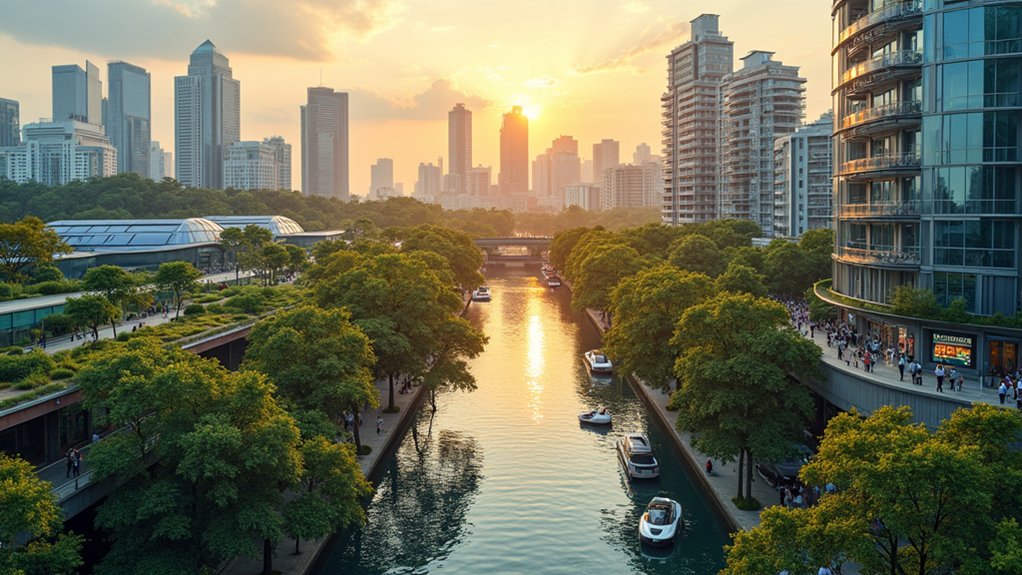
Best ways recycling electric car batteries helps environment
Incredible environmental benefits await when electric car batteries are recycled—discover the top five ways this process shapes a cleaner future.


Discover what sets the world’s top smart cities, Singapore, Barcelona, and Amsterdam, apart from the rest. These innovative cities excel in using technology, data, and sustainability to solve urban challenges. But there’s more to their success than just adopting the latest technology and software. They invest in building robust digital infrastructure, actively engage residents through apps and smartphones, and completely rethink public services with smart solutions.

Want to apply these strategies to your own city? Prioritize the development of digital infrastructure and encourage the use of apps and smartphones for public engagement. Embrace data-driven decision-making and integrate sustainable practices into your technology and software initiatives. By following these steps, your city can also become a leader in smart technology and urban innovation.
Discover how Singapore is pioneering urban innovation through technology. As one of the world’s smartest cities, Singapore seamlessly integrates technology into daily life.
From smart sensors managing traffic to energy-efficient buildings and a robust cashless payment ecosystem, technology is at the core of Singapore’s urban life. The government actively supports innovation by providing open data platforms and strong digital infrastructure.
Whether you’re a resident or a visitor, you’ll benefit from enhanced public services, reliable connectivity, and a city that anticipates your needs through continuous technological advancement.
With a focus on technology, apps, smartphones, and software, Singapore is setting the standard for future-ready cities.
Barcelona is a shining example of digital transformation in action. This vibrant city showcases how technology can be seamlessly woven into everyday life.
From smart lighting systems to digital kiosks and free public Wi-Fi, technology in Barcelona is empowering both residents and tourists. By championing open data, Barcelona allows you to access real-time information on transportation, city services, and local events.
This focus on technology ensures that your urban experience in Barcelona is more efficient, informed, and connected. Whether you’re exploring the city via smartphone apps or utilizing digital kiosks, technology in Barcelona enhances every aspect of city life.
Explore Amsterdam, a city where technology and connectivity are seamlessly integrated into everyday life.
You’ll find bike lanes optimized for safety, alongside smart traffic systems that keep the city moving efficiently. Green energy powers public transport, reflecting Amsterdam’s commitment to sustainability.
The city embraces digital solutions with apps for managing waste, water, and energy, making it easier than ever to live sustainably. With free public Wi-Fi and open data initiatives, residents and visitors can stay connected and informed.
Whether you’re using your smartphone to navigate the city or exploring the latest apps and software, Amsterdam offers a tech-forward experience that promotes a smarter, greener lifestyle.
When you examine the technological advancements in Singapore, Barcelona, and Amsterdam, you can see the potential when cities prioritize technology, sustainability, and people in their growth strategy. To emulate their success, it’s crucial to invest in digital infrastructure, promote open data sharing, and make sustainability a priority. By focusing on technology, apps, and smart software solutions, your city can lead the way in innovation. Always engage residents in the process and continuously seek out new ways to improve. By following these steps, your city can thrive in a world where technology is constantly evolving, and connectivity is key.

Incredible environmental benefits await when electric car batteries are recycled—discover the top five ways this process shapes a cleaner future.

Powerful electric car batteries rely on a precise mix of materials—but what secrets do these key components hold for the future of driving?

To truly grasp electric car motor functions, uncover the surprising mechanics behind their efficiency and power—there’s more beneath the surface than you might expect.

Not sure if driving electric cars truly reduces pollution? Discover the surprising impact your choice can make on the environment.

Unlock the secrets of smart cities and discover how they're quietly transforming urban life—could your city be next?

Begin your journey with the best electric cars for long distance travel—discover which EVs truly excel before you hit the open road.